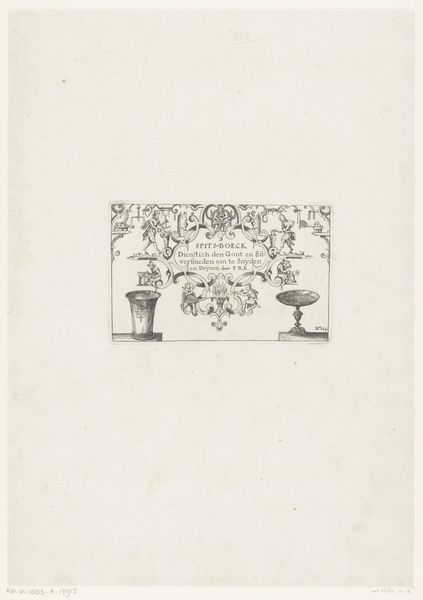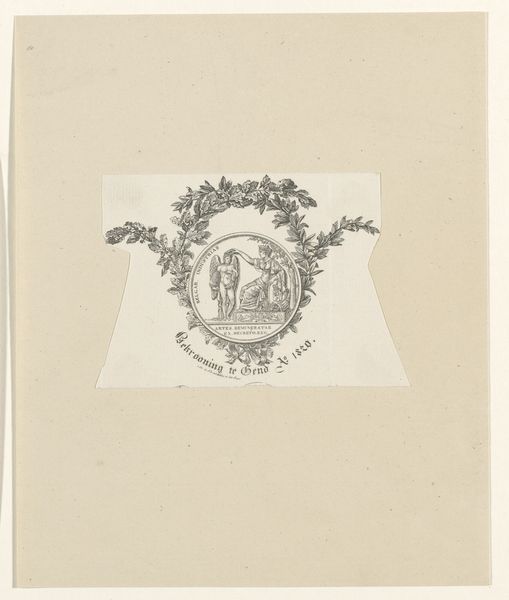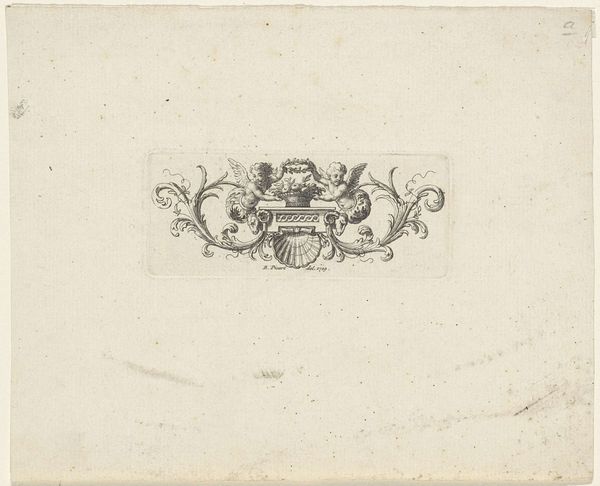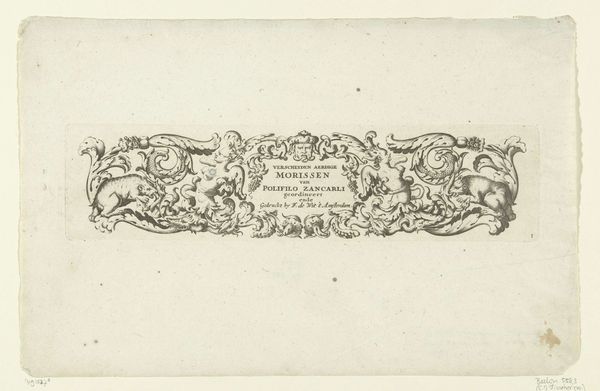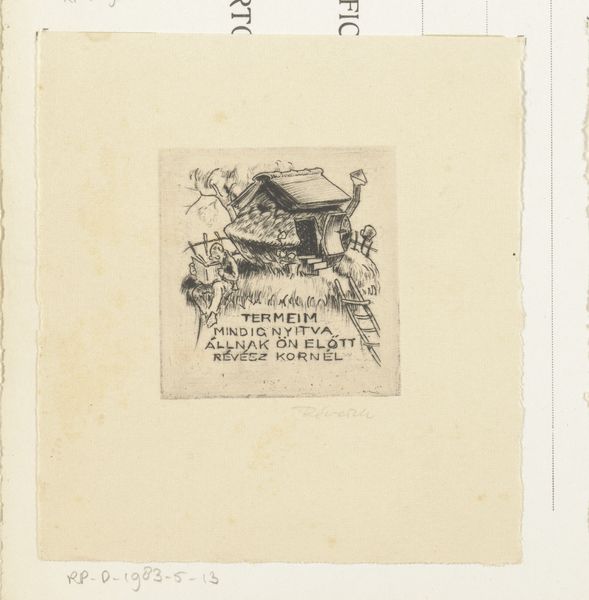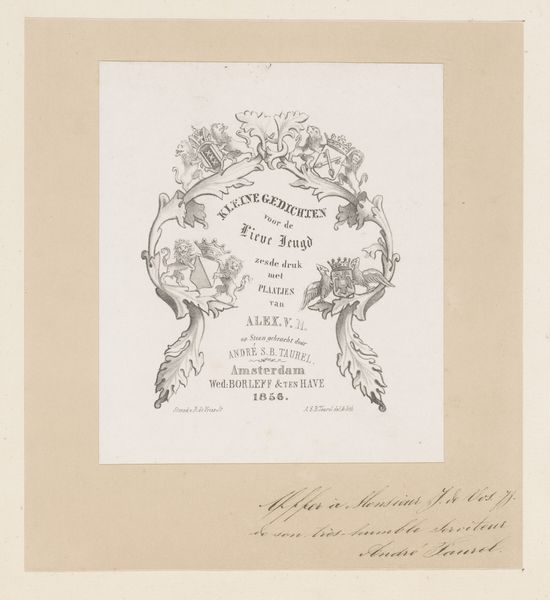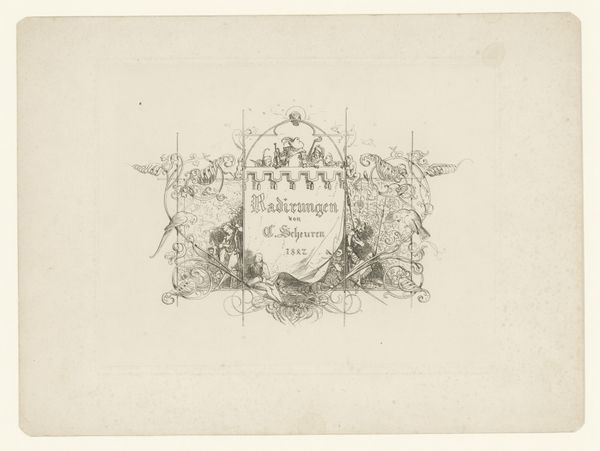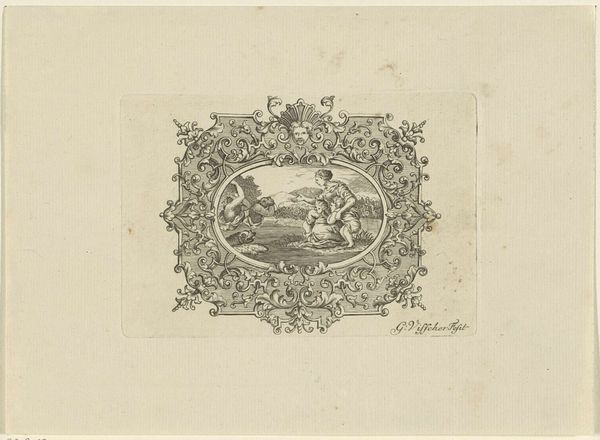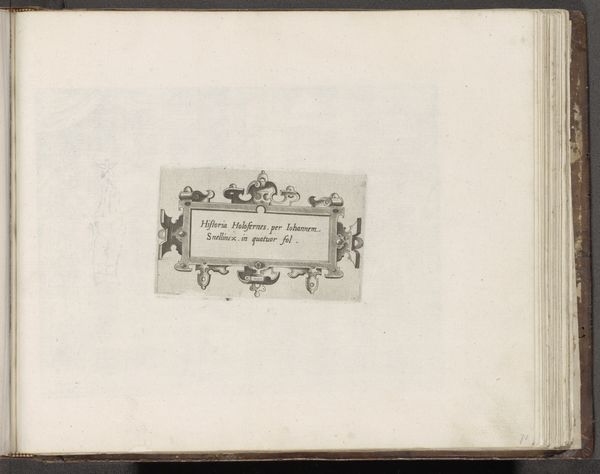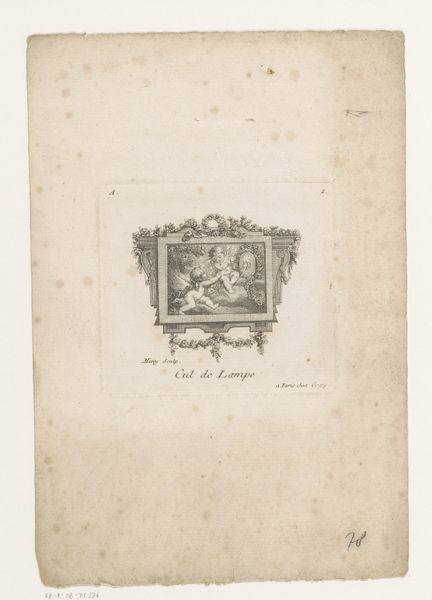
Dimensions: height 203 mm, width 235 mm
Copyright: Rijks Museum: Open Domain
This engraving was made by Izaak Jansz. de Wit, probably toward the end of the 18th century. Its title, "Cartouche van de slang Ourobouros," refers to the image of a serpent devouring its tail, which frames the central text. Engraving is an indirect process. First, the image is incised into a metal plate, usually copper. Ink is then forced into these lines, and the surface of the plate is wiped clean. Finally, the image is transferred to paper under high pressure using a printing press. In de Wit’s time, printmaking was essential for disseminating information and imagery. These were produced in multiples, making images and text widely accessible. Look closely and you'll see other miniature images of the months of the year embedded in the design. The skilled labor to create this effect would have been considerable. The Ouroboros emblem and the themed seasonal illustrations, speak to cycles of time, labor, and perhaps even capitalist production. The symbolic snake, devouring and recreating itself, also provides a lens for considering how the work of art emerges from and reflects a world of material production, circulation, and consumption.
Comments
No comments
Be the first to comment and join the conversation on the ultimate creative platform.
